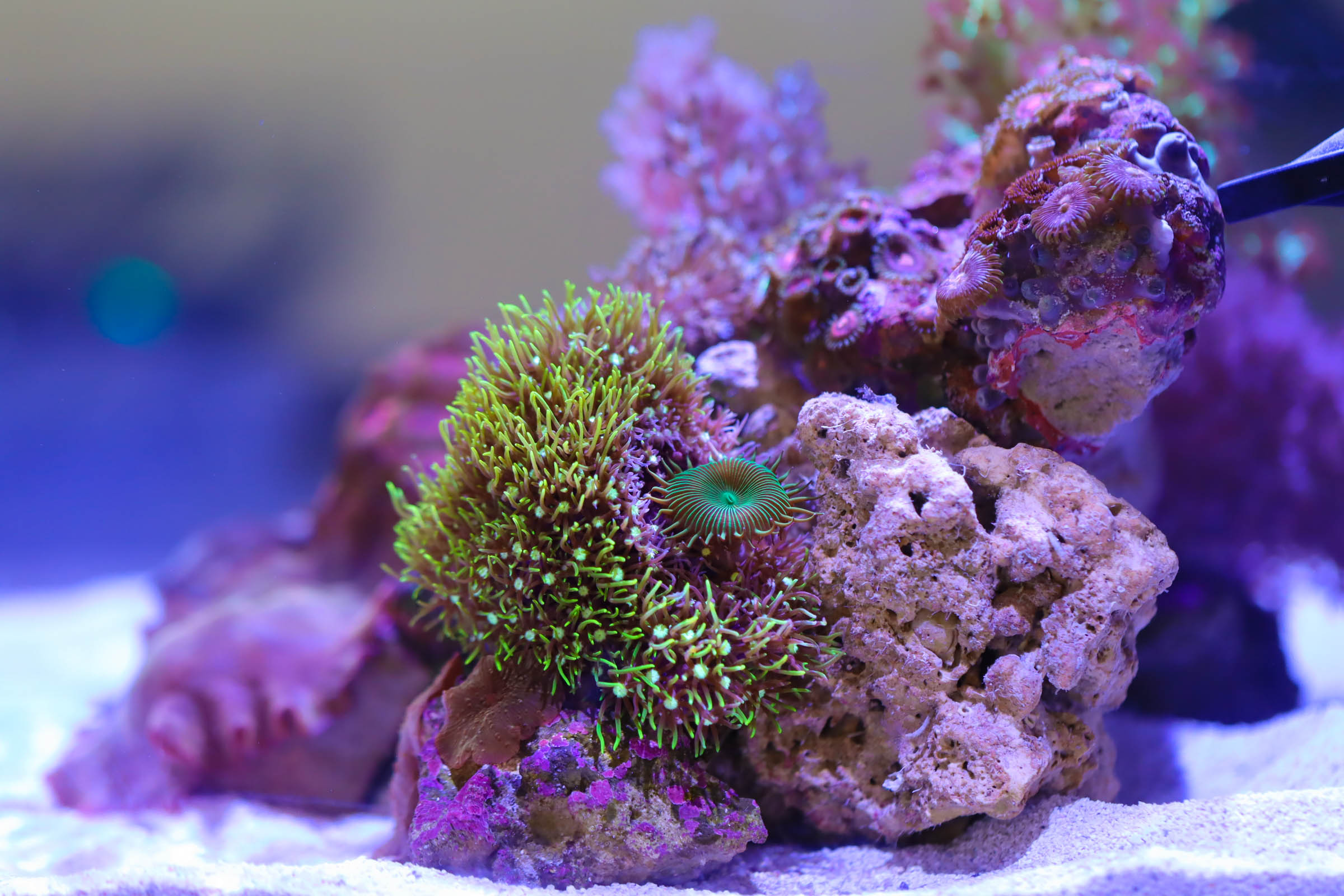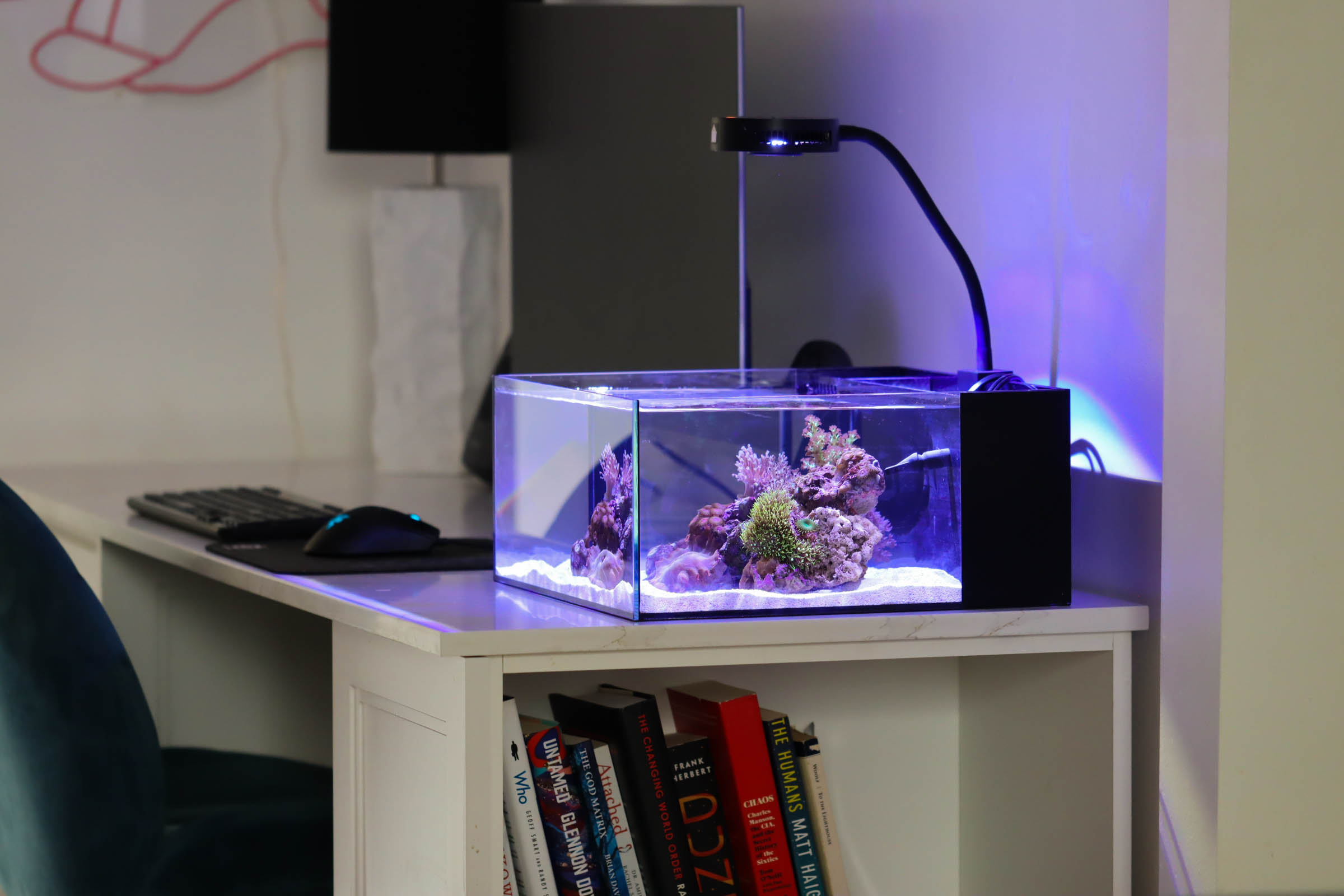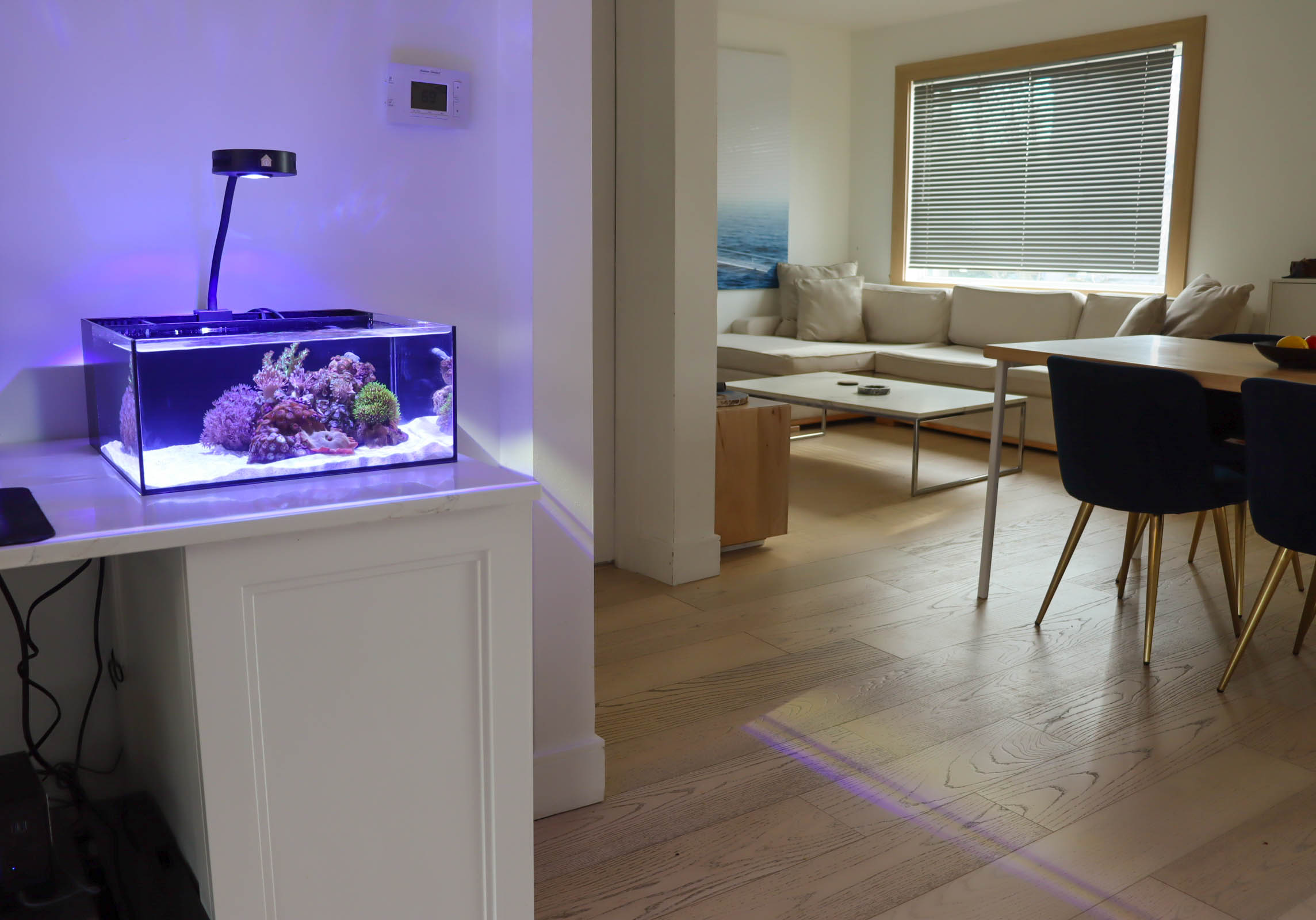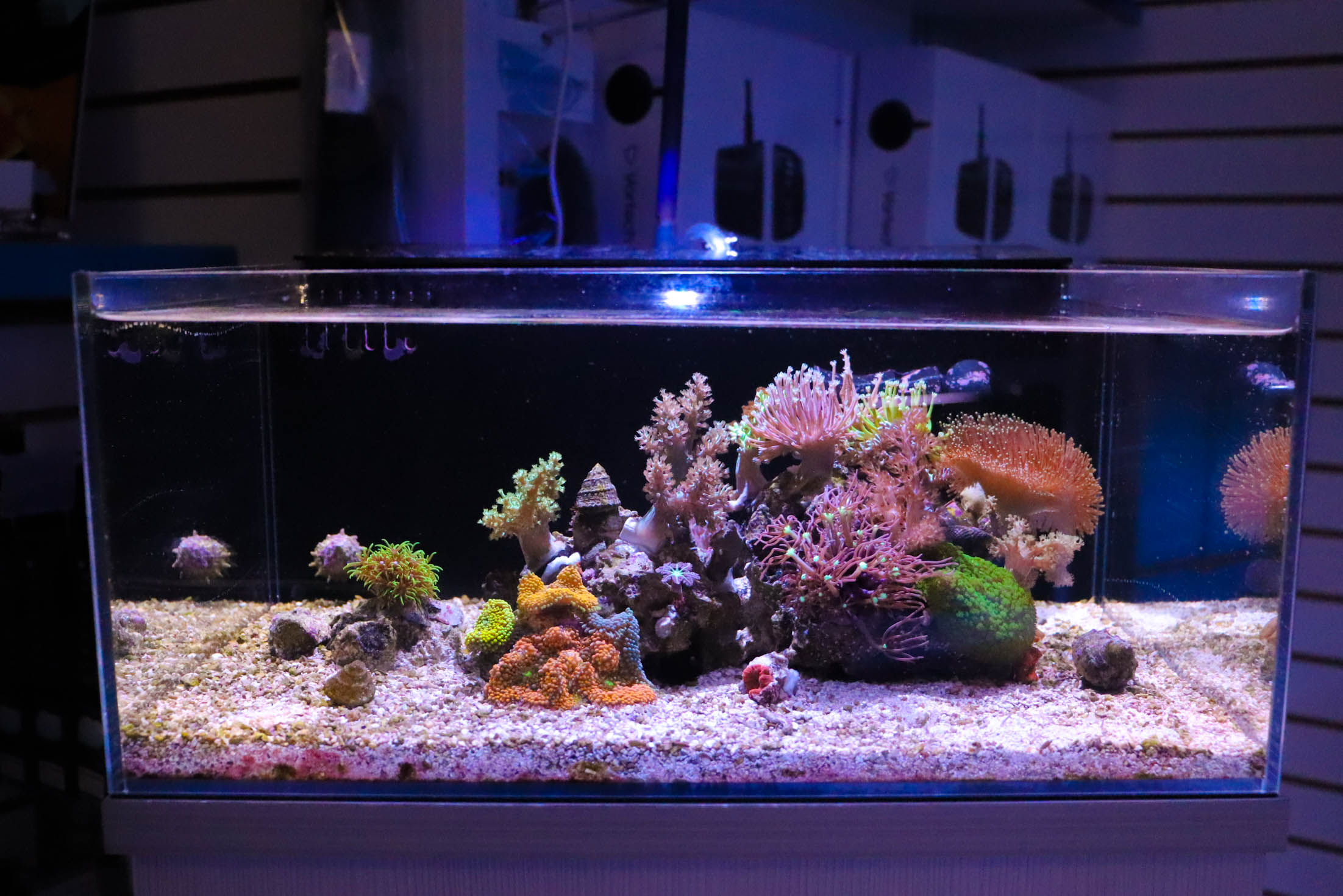Small Reef Tank
All it takes is one quick glance around the hobby to see that saltwater tanks have been getting smaller and smaller. Not too long ago, it was almost unheard of to see a saltwater aquarium under 75 gallons, but today the overwhelming majority of tanks sold are under 50 gallons, with many falling in the 10-30 gallon “small saltwater aquarium” category. Pico reef tanks, those under 10 gallons, are also becoming more and more popular with hobbyists. There are a number of modern lifestyle factors that are contributing to this shift towards small reef tanks. These include cost, size and time.

It is undeniable that smaller tanks cost less money. This includes a lower upfront cost, reduced costs to fill a small saltwater tank with livestock and lower ongoing maintenance costs. A small tank, such as the Reef Casa Studio 12, or even an 18 or 24 gallon aquarium can be set up for a fraction of the cost of a 75 or 100 gallon system. Smaller tanks require smaller return pumps, wavemakers and protein skimmers as well as less sand and rock for the initial setup, all of which reduces the initial upfront cost. In addition, a smaller tank can be stocked with both corals and fish for far less than a large tank, giving hobbyists that “full tank” look for far less money. Finally, small saltwater aquariums cost less to maintain on a regular basis. Smaller water changes, lower volumes of additives and less RODI water to replace water lost to evaporation all lead to a lower per month cost to run a smaller aquarium.

Smaller aquariums are also, well, smaller. This means that they can fit in today’s smaller homes, condos and apartments. A 200 gallon reef tank may look great in a huge basement but often requires a separate room to house maintenance equipment, something that is not practical in many homes. A small reef tank can be placed almost anywhere, provided there is space for a sturdy stand and it is away from direct sunlight. There is no need to plan for a large water change station or to determine whether or not the floor can hold the weight of a larger tank. This means that a small reef tank can be placed in almost any room, allowing reefers to bring a small slice of the ocean into their kitchen, bedroom or home office if they desire. Larger tanks may also require professional delivery and setup to prevent damage. Simply put, smaller saltwater aquariums offer far more flexibility than their larger cousins.

Modern life is becoming increasingly busy and while some hobbyists have the time to maintain larger systems many do not. Smaller reef tanks are much simpler to maintain than large systems, allowing hobbyists to keep their tanks looking great with the investment of a few minutes of time. Smaller tanks mean smaller water changes, which take less time and are less complicated and can be completed with a simple bucket and siphon. Since the vast majority of small reef tanks are All in One (AIO) systems with a rear filtration chamber rather than a sump, there is no need to worry about balancing water levels or cleaning and maintaining a sump. Equipment is also likely to be limited to a return pump, heater and, possibly. an auto top off, small wavemaker and maybe a protein skimmer. This means that there is less equipment to clean, empty and maintain, all of which makes maintenance far simpler and quicker.

There is no denying that large reef tanks will certainly continue to have their place in the hobby and will remain popular with reefers who have the time and space to house and maintain them. However, small saltwater aquariums, such as those offered by Reef Casa, are slowly amassing a huge following due to their lower costs, placement flexibility and ease of maintenance. If you have any questions about which reef tank best suits your needs and lifestyle please reach out to us, we are happy to help!

